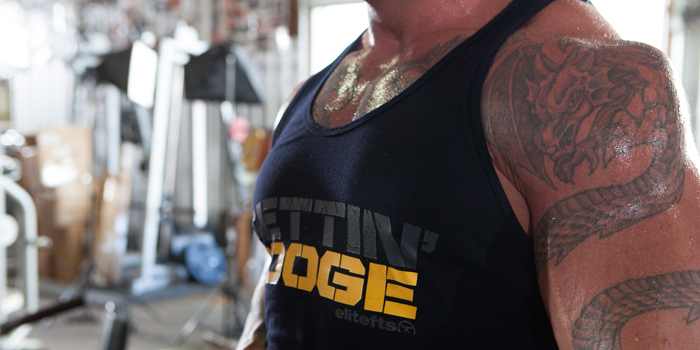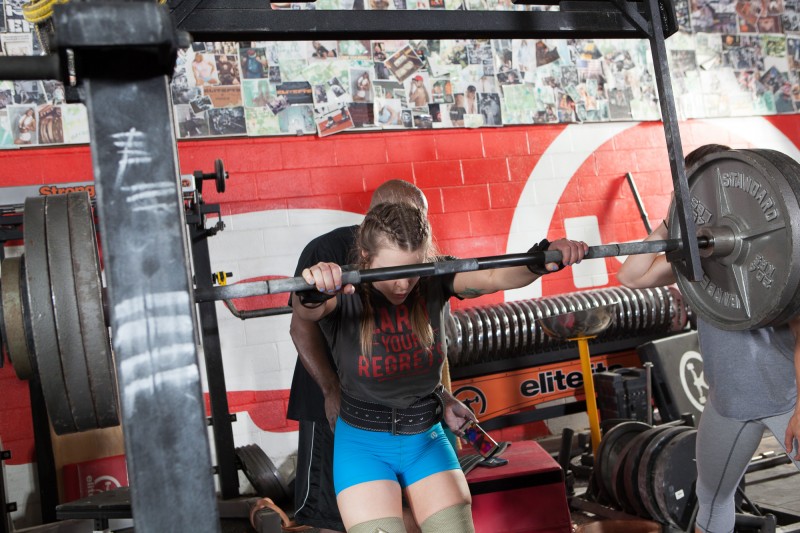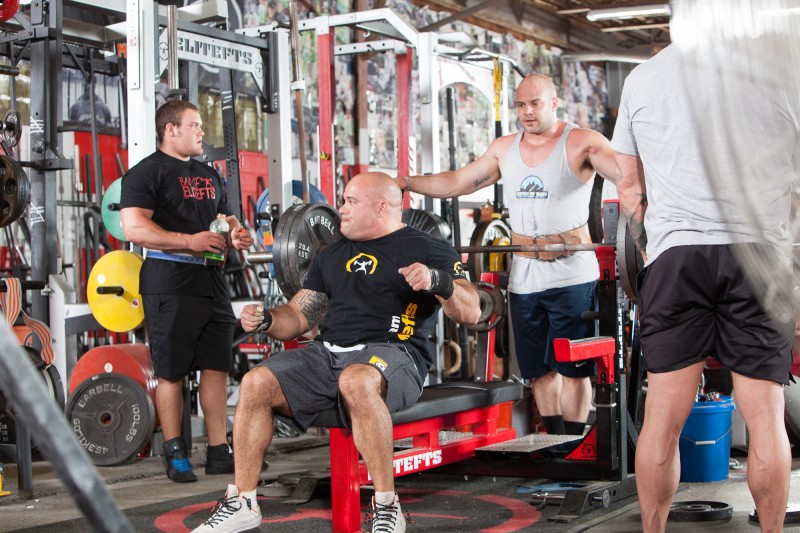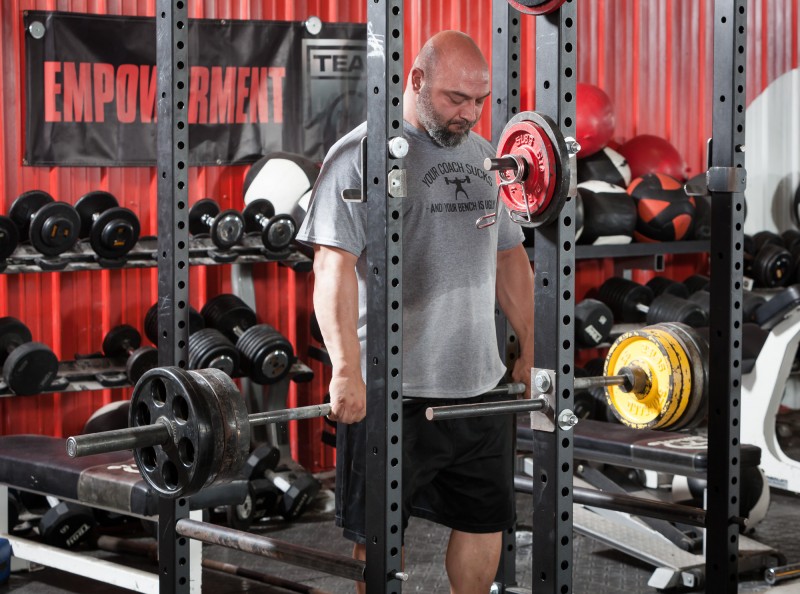
Concurrent training, the combination of divergent training stimuli such as a heavy resistance training (>70% 1RM) coupled with an endurance style of training (long, slow jogging) has received a large amount of skepticism over the years. Primarily, it is frequently postulated that the adaptations brought about through the utilization of resistance training will be inhibited by those of aerobic training and vice versa.
A number of studies in the past have looked at this and, when looking at the outcome of these studies, one would conclude that these two styles of training do have inhibitory roles upon each other. However, much of the more recent studies questions this line of thinking. This being so, this article will present the evidence and let the reader decide for him/herself.
RECENT: Muscle Memory: The Three Key Muscle Fiber Changes
The primary argument against the combination of the two divergent training interventions (aerobic training and resistance training) together in one training session is the, what was once thought, antagonistic molecular responses. Specifically, the increased signaling protein mechanistic target of rapamycin complex 1 (mTORC1) response following resistance training being inhibited via the increase of signaling protein AMP-activated protein kinase (AMPK) following an aerobic training stimulus.
The reader may have come across these abbreviations (AMPK/mTOR) before, however, a brief description of these two signaling pathways will prove necessary.

Exercise-Induced Signaling Proteins
mTOR has been coined as the “master regulator” within the muscle fiber concerning protein synthesis. So, regardless of where the signal may be coming from (amino acids/growth factors/stretch) the signal will inevitably lead to an increase in mTOR activity.
This increase in mTOR activity can then lead to a myriad of signals but, concerning protein synthesis, its functions primarily alter transcription and translation factors. Increased activation of these factors allows for specific expression of various sequences on the DNA allowing for mRNA to be created. Once this mRNA is created, it is taken to the ribosome within the cytoplasm where it is ‘translated’ into new protein, thus, protein synthesis. Increased activation of mTOR allows this increased protein synthesis to take place. This being the case, mTOR is anabolic in nature.
Now, when looking at AMPK, its role may seem opposite to that of mTOR. AMPK is an energy sensor of the muscle fiber. When ATP is rapidly hydrolyzed during intensive training, the AMP:ATP ratio gradually increases leading to increased activity of AMPK. AMPK, similar to mTOR, can then take part in a number of intracellular signaling processes.
A few, but not all, of the pathways which AMPK plays a part in is mitochondrial biogenesis, increased PGC1alpha (a transcriptional co-factor leading to increased activity of mitochondrial genes encoded in the DNA), de-phosphorylation of FOXO which allows it to translocate to the nucleus and activate MURF-1 and Atrogin-1 (both proteolytic factors). This being the case, when concerning protein synthesis, we may conclude that AMPK is catabolic in nature.
So, making the above paragraph less confusing, AMPK increases the oxidative properties of the given muscle fiber along with increasing the activity of proteolytic functions (opposite of protein synthesis) whereas mTOR increases activity of transcription and translation factors which enhance protein synthesis.
Looking at this, it would seem rather evident then that AMPK and mTOR play opposite roles. For example, if AMPK is increased then mTOR is decreased and vice versa. And for the longest time, this was used as the reasoning to discredit concurrent training. However, much research has shown both an increase in mTOR and AMPK following a given training intervention with no decrease to mTOR or altered effects to protein synthesis. This may be due to an overshadowing effect of mTOR on AMPK or the acute time frame (relative to mTOR) that AMPK is increased. Much more research is needed in this area. However, the primary thing to understand is that, when looking at anabolic and catabolic signaling pathways, there is not an inverse relationship as was once thought.

Concurrent Training: Past and Current Research
One of the primary studies which gave credence to the inadequacy between combined resistance and aerobic training is that of Hickson. In this study, Hickson has one group take part in resistance training five times a week, one group do aerobic training six times a week, and a third group take part in both the resistance and aerobic training. The training intervention for the resistance training consisted of, for all exercises, near-maximal loads. The endurance training group exercised at or near their VO2max. Again, the concurrent training group did both of these training interventions.
Two things should be quite evident when looking at this information. For one, the overall frequency of training was significantly greater for the concurrent training group (11 total training sessions per week) than the other two groups. Further, each training session consisted of incredibly rigorous exercise. So, the key finding from these researchers may very well be due to over-reaching/overtraining and not inadequacy of these two divergent training stimuli.
This is a very interesting study because, while I feel it does not discredit concurrent training, it does demonstrate that if concurrent training is inappropriately programmed, it can have negative effects on the desired adaptations. Stressors on the body work synergistically and the body has a finite capacity in its ability to adapt to said stressors. Thus, proper programming is paramount.
RELATED: An Argument for Post-Training Cardio Gains
Looking at more recent research, Lundberg and colleagues have shown an increased anabolic effect following concurrent training as compared to either resistance training or aerobic training alone. However, when looking at the neural output of the individual (such as power output) there was shown to be a decrease in the concurrent training group as compared to the resistance-only trained group.
The key issue here is the time in-between the two training interventions. For example, one of their studies did an aerobic training session with a 15-minute break and then a resistance training session. The power output decreased in this concurrent-trained group. However, the same researchers did another study which substituted the 15 minutes for 6 hours. In this case, there were no differences in power output with the concurrent trained group as compared to the resistance-only trained group. This being the case, time looks to be a key factor when enhanced neural adaptations are sought.
Timing: The Key Variable
It must be noted that this article is specifically looking at intracellular signaling pathways leading to increased muscle size (hypertrophy). Thus, while much of the literature has found little evidence to demonstrate an attenuated anabolic effect, there has been ample evidence showing attenuated kinetic aspects of the given exercise. Specifically, as previously mentioned, if there is minimal time between the endurance-based training and the resistance-based training, the neural output ability of the individual will be decreased.
The above mentioned may prove troublesome for sports which require high levels of neural activity. This is frequently the case during the off-season of which the coach will often hold the “conditioning” session early in the morning and then have the “weight room” session following.
However, as previously mentioned, this side-effect can be overcome. If a concurrent training program is sought and neural adaptations are the primary goal, the two training sessions (endurance and resistance) should be spaced with a minimum of six hours apart. If six hours is given, it was demonstrated in the above-mentioned paper that not only did neural output of the concurrent trained group increase in line with the resistance-only trained group, but that the concurrent trained group also had a greater increase in muscle size.
This being the case, time is a key variable for concurrent training and will dictate the overall adaptation.
So again, when looking at anabolic signaling pathways within the skeletal muscle fiber, all have one thing in common, they must all go through (from what we know so far) the mTOR pathway. On the other hand, it would seem plausible to conclude that any activity which inhibits mTOR signaling would be catabolic in nature and subsequently have an inverse relationship with mTOR. This can, to a certain extent, be seen with AMPK.

I say, “to a certain extent” because the primary mechanism which inhibits mTOR is TSC2. TSC2 is activated by AMPK. However, through a strenuous training bout, it must be understood that there are a number of mechanisms which activate mTOR such as stretch, amino acid influx, growth factors, among others. This being the case, even if AMPK does inhibit mTOR to some extent, the overall activity of mTOR may still exceed any inhibitory AMPK signaling.
Therefore, I feel it unwise to talk about AMPK and mTOR as having an inverse relationship. AMPK and mTOR may very well both be highly active at the same time as has been shown in several past studies. So, let’s look at some of the key areas which may cause an enhanced mTOR signaling and subsequent hypertrophying stimulus with concurrent training.
Possible Mechanisms at Play
It is still somewhat speculated as to what is at play leading to this increased anabolic response, however, there are some areas which stand out as leading candidates. One possible mechanism is cell swelling.
Coupling an endurance-based and resistance-based training intervention can lead to significant metabolic stress within the given muscle fiber. This increase in intracellular metabolite accumulation has been speculated to alter cell-membrane structure leading to a mechanotransducing effect of mechanically sensitive ion channels.
Along with this, integrins which span the muscle fiber membrane which physically attach the extracellular matrix to the intracellular environment have also been postulated to increase in activity following cell swelling. This increase in integrin activity has been shown to lead to greater activity of anabolic properties within the cell. Moreover, this cell swelling has been demonstrated to increase the transportation of amino acid influx to the muscle fiber subsequently enhancing mTOR activity and protein synthesis
Further, an extreme increase in intracellular calcium content has been shown to be present following a concurrent training intervention. This increase in calcium content has been demonstrated to activate mTORC1 leading to increase in protein synthesis and subsequent hypertrophy. Additionally, when coupling these apparent divergent stimuli, an increase in reactive oxygen species (ROS) has been shown to occur which may also acutely increase mTOR signaling.
The last mechanism which may play a key role in the increased anabolic effect of concurrent training can be demonstrated via the number of muscle contractions which takes place during the training intervention. It is, without question, greater in the concurrent training group as compared to resistance-only or endurance-only trained group. This is important because there are many signaling proteins which are located on the z-line of the sarcomere (the smallest functional unit of a muscle fiber).
Two key signaling proteins which lie at the z-line of a sarcomere is alpha-actinin and phospholipase D (PLD).Looking at PLD, upon muscle contraction, PLD becomes active which can cause an increase in the production of phosphatidic acid. Phosphatidic acid has been shown to bind to mTOR leading to its activation and subsequent protein synthesis. Further, looking at alpha-actinin (a protein which binds actin filaments), upon muscle contraction it has been shown to increase in activity and subsequently causing an increase in calcineurin activity which, too, has been shown to have an anabolic effect.
A Few Caveats
Of course, with anything, there are caveats. The first, and in my modest opinion, most important, is the necessity to specify the training stimulus to meet the athletes level of preparedness. This can be viewed as an inverse relationship. As the athlete becomes more and more advanced, the training needs to become more specific with less emphasis placed on general physical preparation in order to reap greater and more specific adaptations.
This denotes the importance of a proper periodized scheme in relation to the overall magnitude of the concurrent training stimulus. As the athlete increases in specialty, this warrants a more specific approach concerning the necessary biomotor, bioenergetic, and biodynamic peculiarities of his/her sport.
The above being the case, year-round concurrent training is less than advantageous for a college American Football player as compared to the novice middle schooler. However, a question may be, when might be a good time for the more advanced athlete to utilize a concurrent training approach?
Some good times to use a concurrent training approach would be during the training of novice and moderate-novice athletes. However, even for elite or sub-elite athletes, it may be advantageous to implement a concurrent style of training during the off-season, recovery/regeneration sessions or, as coined by the late Tudor Bompa, during the anatomical adaptation phase.
I say this because the predominant positive effect elicited by concurrent training, at least for power sports, is at the molecular level. As previously mentioned, concurrent training increases protein synthesis via increased mTOR activity and subsequent increased downstream factors such as P70s6k, 4EBP1, and EIF2BE which then increases protein synthesis and overall muscle mass. Further, concurrent training has been shown to increase lactate activity which assists in tissue regeneration. And lastly, concurrent training has been demonstrated to increase mitochondrial biogenesis which enhances the athlete’s oxidative capabilities.
Thus, while much of these adaptations may be non-specific for many sports, they can wisely be implemented in the off-season or recovery session to increase protein synthesis and subsequent hypertrophy, increase lactate activity to assist in tissue repair, and increase oxidative properties such as mitochondrial biogenesis as to further assist in the recovery process.
Conclusion
Lastly, when taking a step away from signaling proteins and looking directly at the transcriptome (gene expression) following concurrent training as compared to resistance training, there are multiple sequences of DNA which alter both oxidative and muscle fiber contractile properties simultaneously that have been shown to be upregulated to a greater degree in the concurrent training group. This further demonstrates the necessity to view the complex intracellular system as a network which takes part in cross-talk rather than a linear signaling process which work in an orderly fashion.
There are many variables which need to be taken into consideration when implementing a concurrent training plan. The athletes training state, current position within the individuals yearly plan, the individual's overall goal, the time in-between sessions, the total number of training interventions programmed, among others. However, taking the information given so far, does an aerobic session prior to a resistance training session automatically attenuate any possible anabolic effects from the resistance training intervention? No. Rather, you may actually have a greater anabolic effect with the two divergent training stimuli as compared to either aerobic or resistance training alone. So, give it a try.
References
- Lundberg TR, Fernandez-Gonzalo R, Gustafsson T, et al. Aerobic exercise alters skeletal muscle molecular responses to resistance exercise. Med Sci Sports Exerc. 2012;44:1680–8.
- Goodman CA, Frey JW, Mabrey DM, et al. The role of skeletal muscle mTOR in the regulation of mechanical load-induced growth. J Physiol. 2011;589:5485–501.
- Hickson, R.C. 1980. Interference of strength development by simultaneously training for strength and endurance. Eur. J. Appl. Physiol. Occup. Physiol. 45: 255–263. doi:10.1007/ BF00421333. PMID:7193134.
- Baar K. Using molecular biology to maximize concurrent training. Sports Med. 2014;44(Suppl 2):S117–25.
- Nader, G.A. 2006. Concurrent strength and endurance training: from molecules to man. Med. Sci. Sports Exerc. 38: 1965–1970. doi:10.1249/01.mss.0000233795.39282.33. PMID:17095931.
Luke Olsen is a current graduate student within the Exercise Physiology department at the University of Kansas with research interests related to exercise’s role in cellular and molecular physiology.










